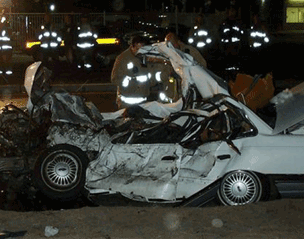What is the issue?
 Every 48 minutes, someone dies in a crash involving an alcohol-impaired driver. In 2009 alone, 10,839 people died nationwide, accounting for one-third of all highway deaths. Countless more were injured. Although we have seen a decrease in the number of highway fatalities in recent years, the fact that one-third of highway deaths involve an alcohol-impaired driver has not changed in the last decade. Furthermore, the National Highway Traffic Safety Administration estimates that an individual makes 88 impaired driving trips before being arrested. Impaired driving is entirely preventable. It simply doesn’t have to happen.
Every 48 minutes, someone dies in a crash involving an alcohol-impaired driver. In 2009 alone, 10,839 people died nationwide, accounting for one-third of all highway deaths. Countless more were injured. Although we have seen a decrease in the number of highway fatalities in recent years, the fact that one-third of highway deaths involve an alcohol-impaired driver has not changed in the last decade. Furthermore, the National Highway Traffic Safety Administration estimates that an individual makes 88 impaired driving trips before being arrested. Impaired driving is entirely preventable. It simply doesn’t have to happen.
What can be done . . .
Addressing the problem requires an understanding that no two impaired drivers are identical and that no single countermeasure applies across the board. In fact, in many cases, individuals who drive impaired are either unwilling or unable to separate their drinking from their driving. Alcohol-impaired driving is a complicated problem that requires a comprehensive solution. General deterrence is critical and can be created through such programs as sobriety checkpoints and administrative license revocation. But when offenders can drive impaired so many times before being arrested, it is important to limit plea bargaining and diversion—programs that can mask the identify of a chronic impaired driver, a hard core drinking driver. At the same time, it’s important to assess offenders for underlying alcohol problems, require appropriate treatment, and hold them accountable for behavioral change.
Assessment and treatment must be combined with vehicle sanctions that separate individuals from their vehicles or prevent them from operating their vehicles while under the influence of alcohol. To reduce recidivism, the use of jail alternatives should be expanded to include dedicated jail/treatment facilities, home detention with electronic monitoring, or intensive supervision probation.
Related Reports
Title: Safety Report: Actions to Reduce Fatalities, Injuries, and Crashes Involving the Hard Core Drinking Driver
NTSB Report Number: SR--00-01, adopted on 6/27/2000 [Summary | PDF Document]
Title: Highway Accident Report: Passenger Vehicle Median Crossover and Head-On With Another Passenger Vehicle, Linden, New Jersey, May 1, 2003
NTSB Report Number: HAR-06-02, adopted on 2/7/2006 [Summary | PDF Document]
